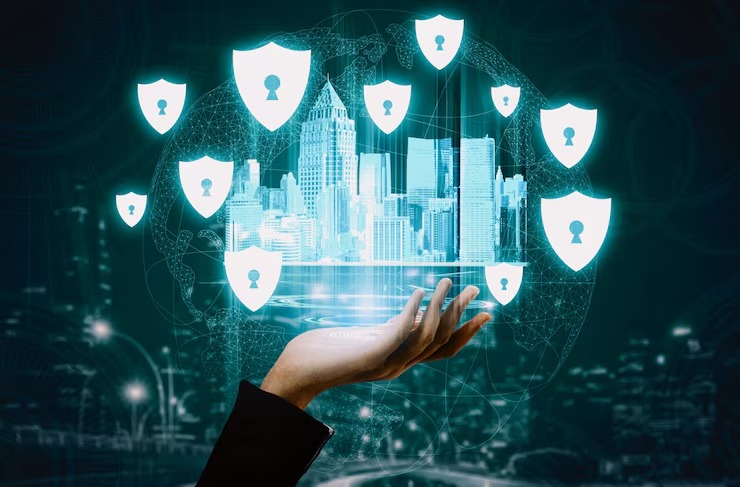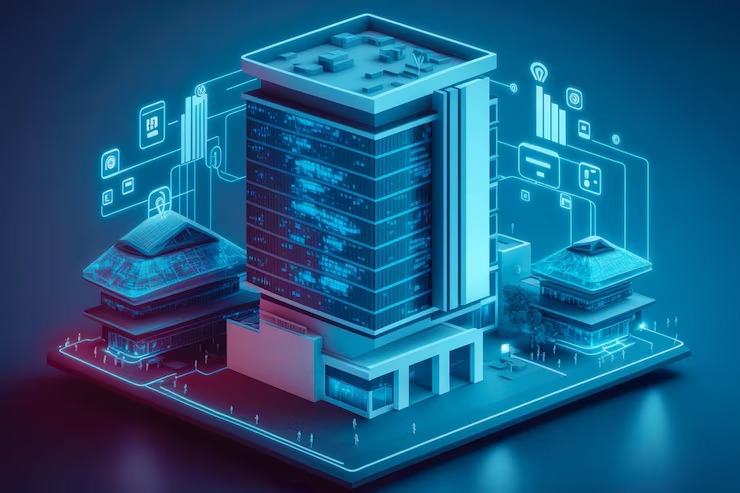Building management system cyber security risks are happening in this digital age. A single mistake can render your BMS powerless, enabling illegal access to your building, identity theft, and related cybercrimes. Building management systems interconnect and centralize all automated appliances, including HVAC, access control, and lighting.
Although a BMS boosts efficiency and comfort, it is prone to cyber vulnerabilities. If you are a BMS manager in a rental apartment, your sole responsibility is to prevent these dangers. You must implement strategies that can tighten your BMS cybersecurity. This article reveals the risks of an integrated BMS and highlights the best practices to ensure everyone’s safety.
Building Management System – An Overview
Before discussing building management system cyber security, do you even know what a BMS is? BMS or Building Management Systems are advanced computer-based units that connect, control, and centralize automated systems.
These include lighting, energy, air conditioning, thermostats, fire safety devices, etc. The BMS automates and streamlines all building operations. It helps a property manager to study the current state of a building’s infrastructure and take necessary actions quickly.
The BMS collects data from every subsystem and generates live insights and updates. It improves the operational efficiency by prompting managers to act before a situation escalates. A building management system maintains the security protocols of a building with one brilliant interface.
Building management system cyber security risks increase if your IoT devices have weak default settings. Another cause is the use of old-fashioned appliances that lack advanced security features.
Still, your BMS is at risk of tampering if your third-party vendors ignore the best security practices. A violation of the above areas can trigger operational inefficiency and service disruption. Moreover, it can cause huge financial losses and bruise your reputation as a property manager.

What Risks Do BMSs Have?
A building management system centralizes and controls how a building operates. However, it can only work efficiently without exposure to cyber threats. A BMS is a key target for cyber threats.
You must understand these threats before you plan your defense mechanisms. Here are the most prevalent building management system cyber security risks:
- DDoS – Hackers who plot DDoS attacks send overwhelming traffic to a system. The goal is to disrupt normal operations for a while.
- Phishing – Cyber criminals use the phishing technique to gather confidential data from unsuspecting victims. It commonly occurs in the form of a private message with deceitful links.
- Insider – These cyber threats emanate from inside the company.
- Ransomware – The Ransomware cyber security risk occurs when hackers lock access to your data, website, or any other crucial system until you pay a ransom.
The abovementioned attacks happen if there are security loopholes in your BMS. These loopholes can give hackers unauthorized access to your building. Once they gain access, they can manipulate your building controls and trigger terrible operational disturbances.
They can also tamper with confidential data, steal your identity, and impersonate you when committing cybercrimes. If you want to prevent this from occurring, you should understand each cybersecurity risk and take the correct precautionary measures.
Solving Building Management System Cyber Security Threats
How can you run your building management system without cybersecurity threats? Here are the best practices to follow when trying to protect your BMS:
Run Regular Cyber Security Risk Assessments
It is impossible to avoid a risk you are not aware of. Thus, the primary thing to do when trying to protect your BMS from cyber threats is to conduct thorough risk assessments and audits. Check the configuration and nature of your network.
Review critical data to understand its sensitivity. Assess your current and future BMS security protocols, and revisit your contractual requirements. Once you assess your risks, prioritize actions that can promote the safety of your BMS, including network encryption, multifactor authentication, etc. Since cybersecurity risks evolve regularly, repeat your risk assessment exercise often.
Execute Security Controls
The second best practice for enhancing building management system cyber security is the implementation of safety controls. These are physical and virtual safety controls. The physical cyber security controls are alarms, CCTVs, locks, badges, etc. Their role is to reduce access to BMS devices.
Virtual safety controls are intangible, including passwords, multifactor authentication codes, firewalls, data encryptions, antivirus, data patching, etc. You should also change your administrative policies and procedures relating to cybersecurity controls.
Segment Your Network
One way to build a robust BMS is to segment your network. Segmentation allows you to divide and separate your security controls. This will let you control each system based on its risk exposures. Network segmentation can stop a cybersecurity threat from affecting all connected networks.
It can also safeguard surveillance cameras, alarms, thermostats, and other security features in your network. Since every building system operates within a segregated zone, one compromised segment cannot affect all others. The BMS manager will have the chance to check the control system that has failed and restore its optimal performance.
Complicate Access Control
Another way to boost building management safety cyber security is to make access control harder to reach or manipulate. You can complicate its access by adopting robust authentication techniques. These include the following:
- MFA – This refers to multifactor authentication. MFA restricts access to persons who can secure the operations of various automation systems. It denies access to any person who only generates a password and approves the one who has an MFA code and a password. Multifactor authentication is essential in smart buildings that use building management software. Their software captures and stores sensitive information on HVAC, lights, energy consumption, and other functions. If only authorized people access these control systems, a property management company can prevent expensive building operation disruptions and enhance device performance.
- RBAC – Role-based access control is another way to make the building management system cyber security less vulnerable. It gives access to specific sections of the BMS to the assigned individual. This can prevent a malicious user from tampering with another person’s role in the BMS.
Update Your Security System
Do you run a legacy system with vulnerable security features? If so, your odds of experiencing building management system cyber security threats are high. Hackers and other cyber criminals can use these vulnerabilities to plan an attack. As a building manager, you should patch your software and update your firmware to make your BMS secure.
Further, upgrade your hardware to increase operational efficiency and boost the performance of integrated BMS devices. Consistent Updates enhance the performance of various automation control systems, including energy, lighting, and air conditioning. Review newly-installed updates if you suspect issues that affect performance.

Train the Administrative Team
Property managers who involve their workers in protecting building automation systems do a better job than those who do not. The team should learn how to detect and resolve different cybersecurity risks. Additionally, it should understand why multifactor authentication is more robust than password-only access.
Teach your team why it is necessary to follow each protocol when accessing the company’s building management software. Another way is to have your IT staff teach the operations team about the reality of cybersecurity threats. Each team member should understand the importance of safeguarding the part of the BMS they are responsible for.
Disaster Response Planning
It is possible to foresee your building management system cyber security threats and plan your response. As a facility manager, you should create procedures for identifying and mitigating security incidents in your building management systems. If a cybersecurity attack occurs, you should have protocols in place to convey the news to the stakeholders.
Additionally, you need protocols for accessing data backups to ensure the continuation of your building operations. One disaster planning clue is to install renewable energy sources to serve as backups when grid electricity is unavailable. These sources can reduce utility bills and ensure continuity of services even during interruptions.
Conclusion
Building management system cyber security ensures that buildings stay safe, efficient, and comfortable. Unfortunately, BMS is prone to cyberattacks that can jeopardize and interrupt building operations like HVAC, energy sources, and lighting.
Try to uphold the best practices when managing your BMS, including planning for disasters before they happen. Involve your team in these efforts by sharing solutions they can apply during an active cybersecurity attack.





